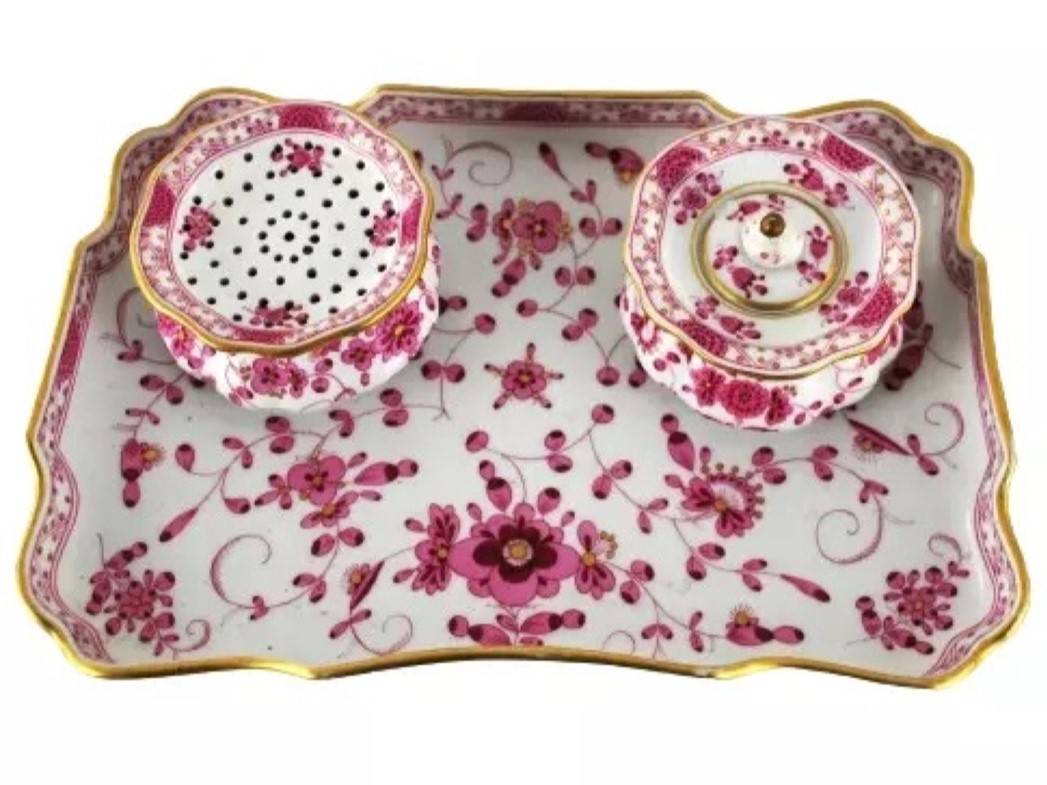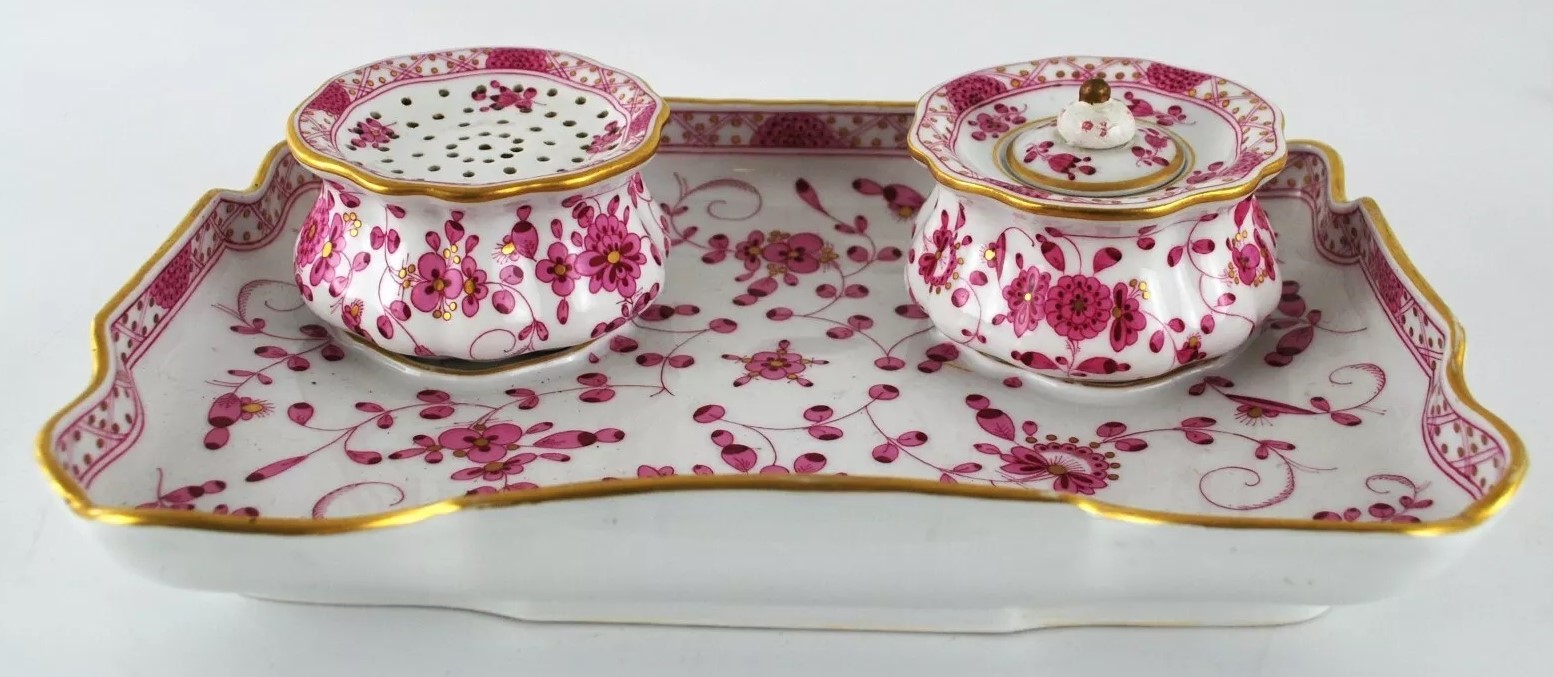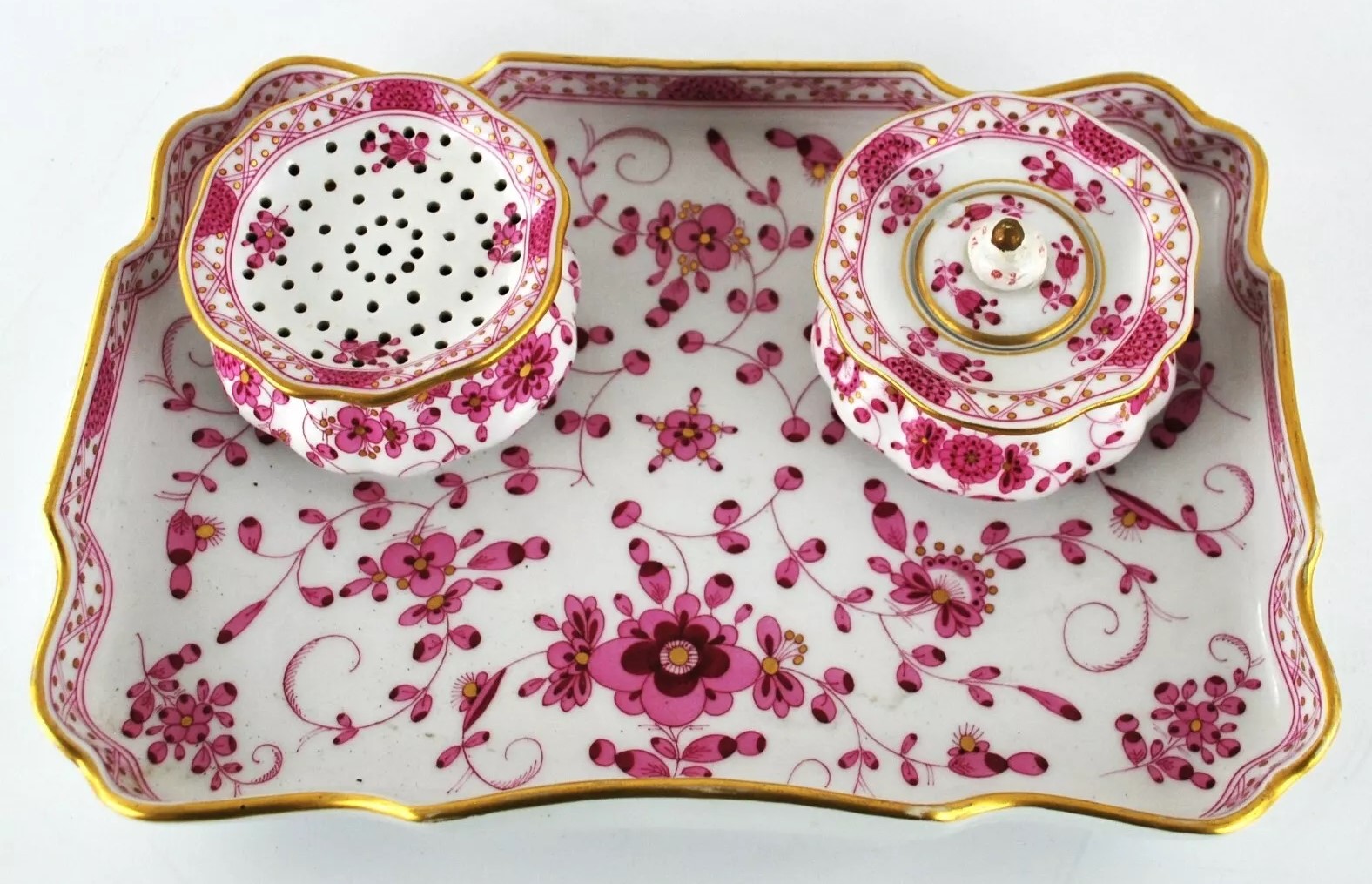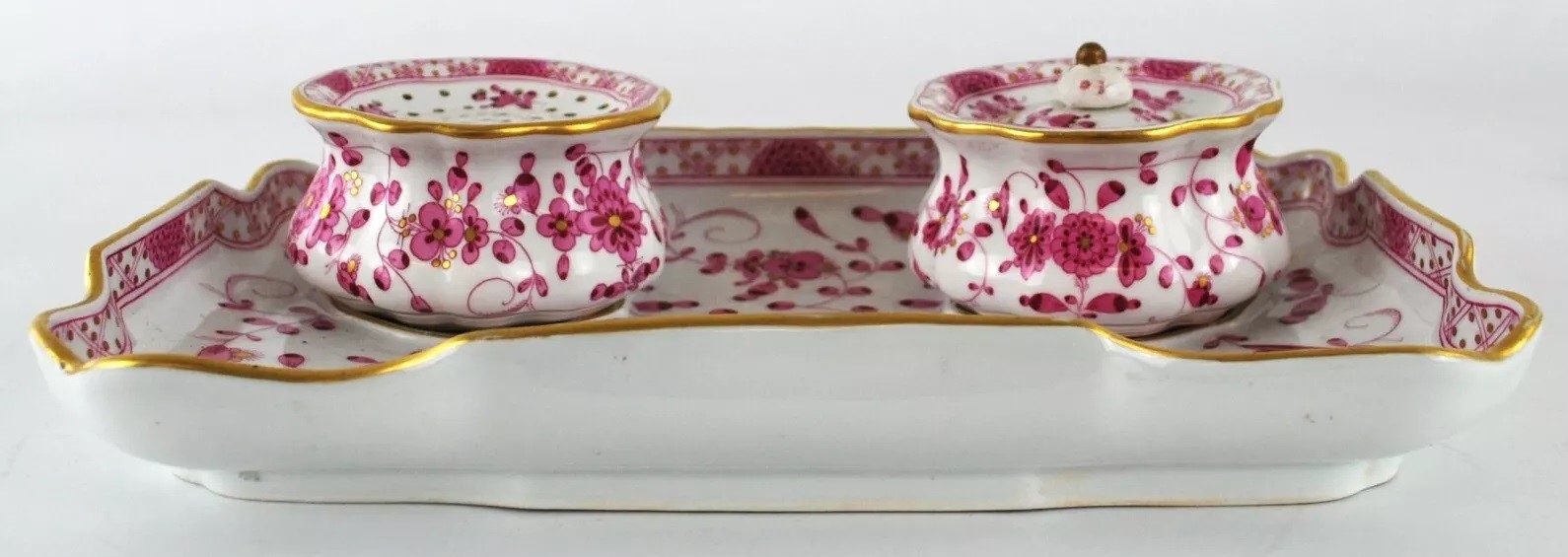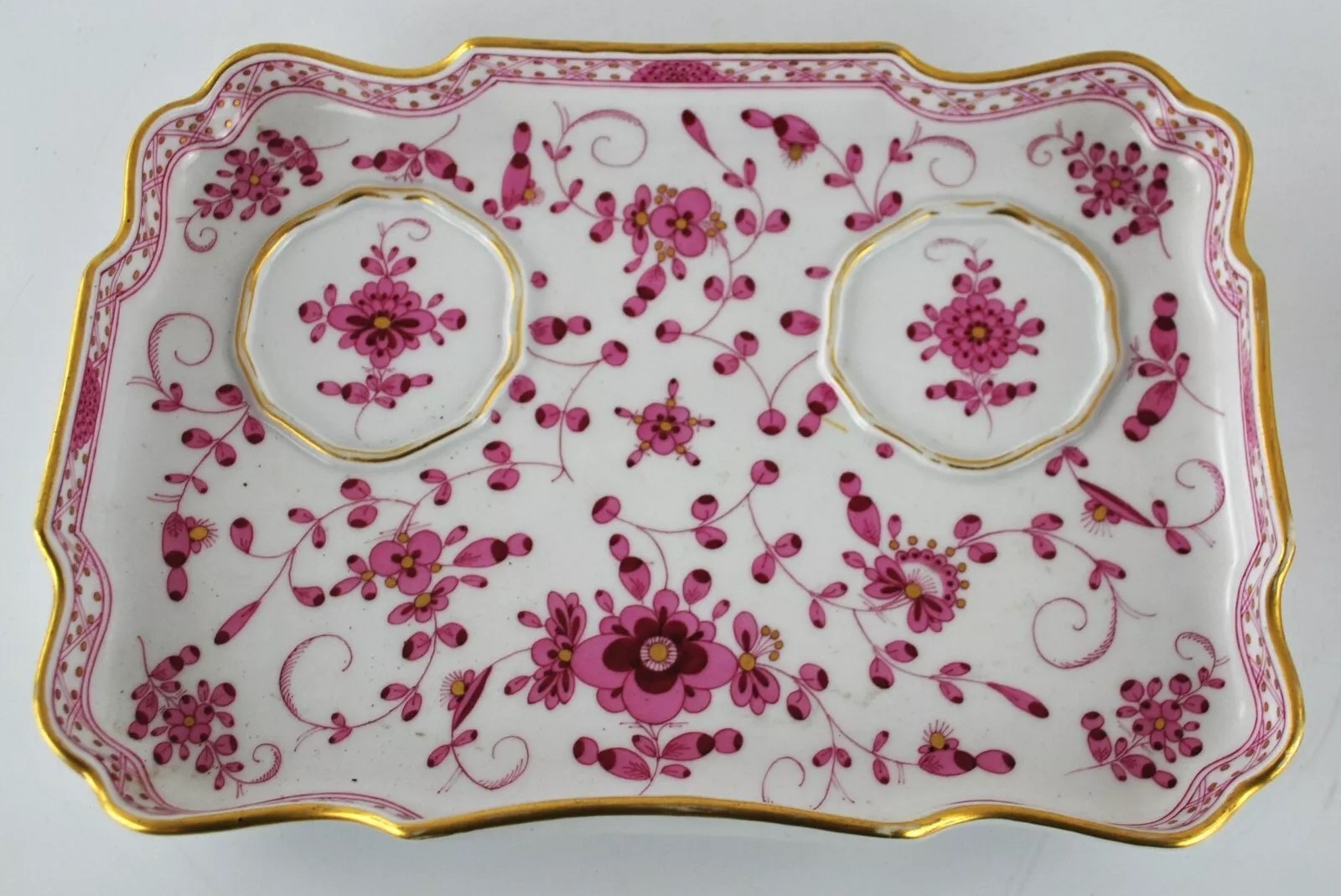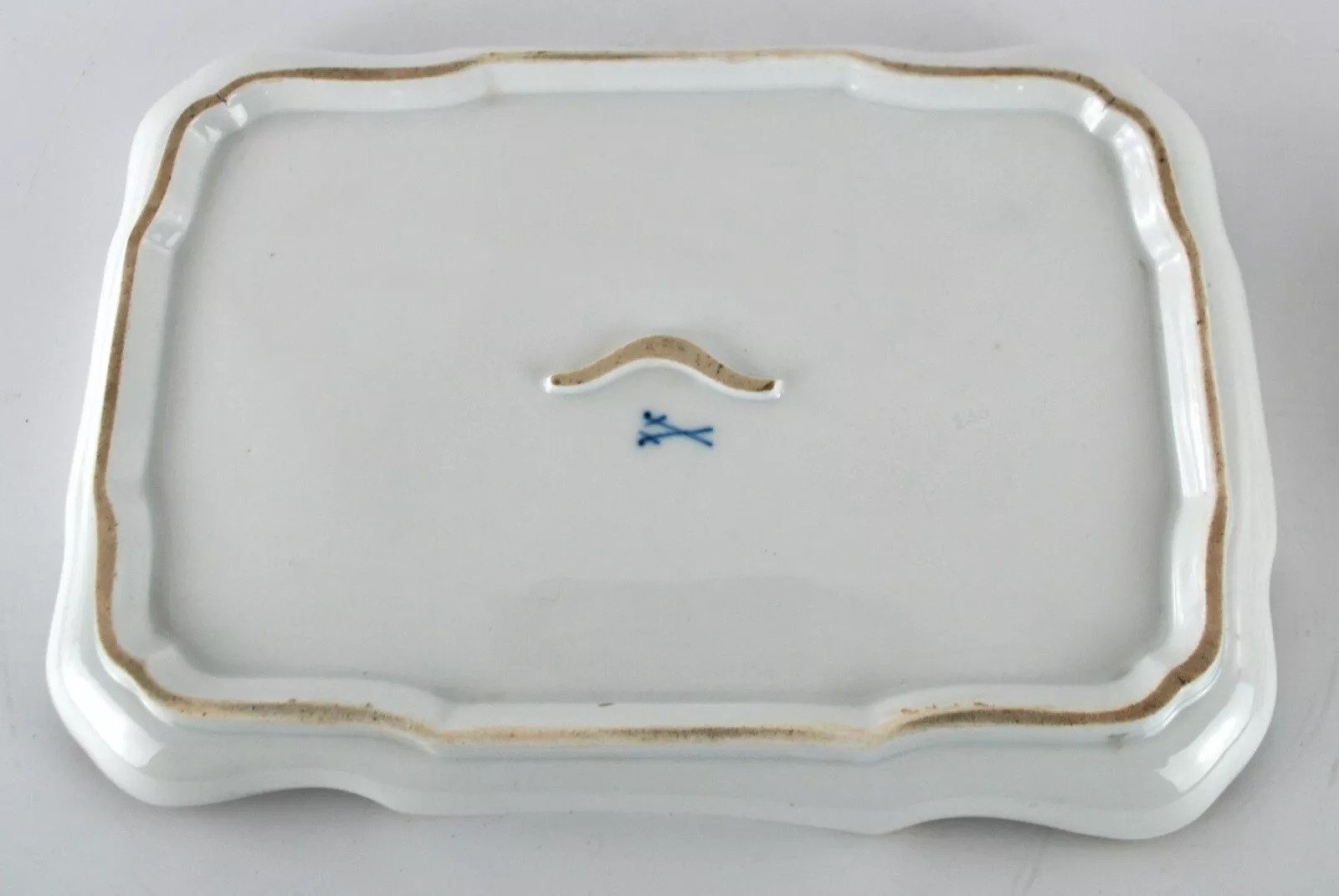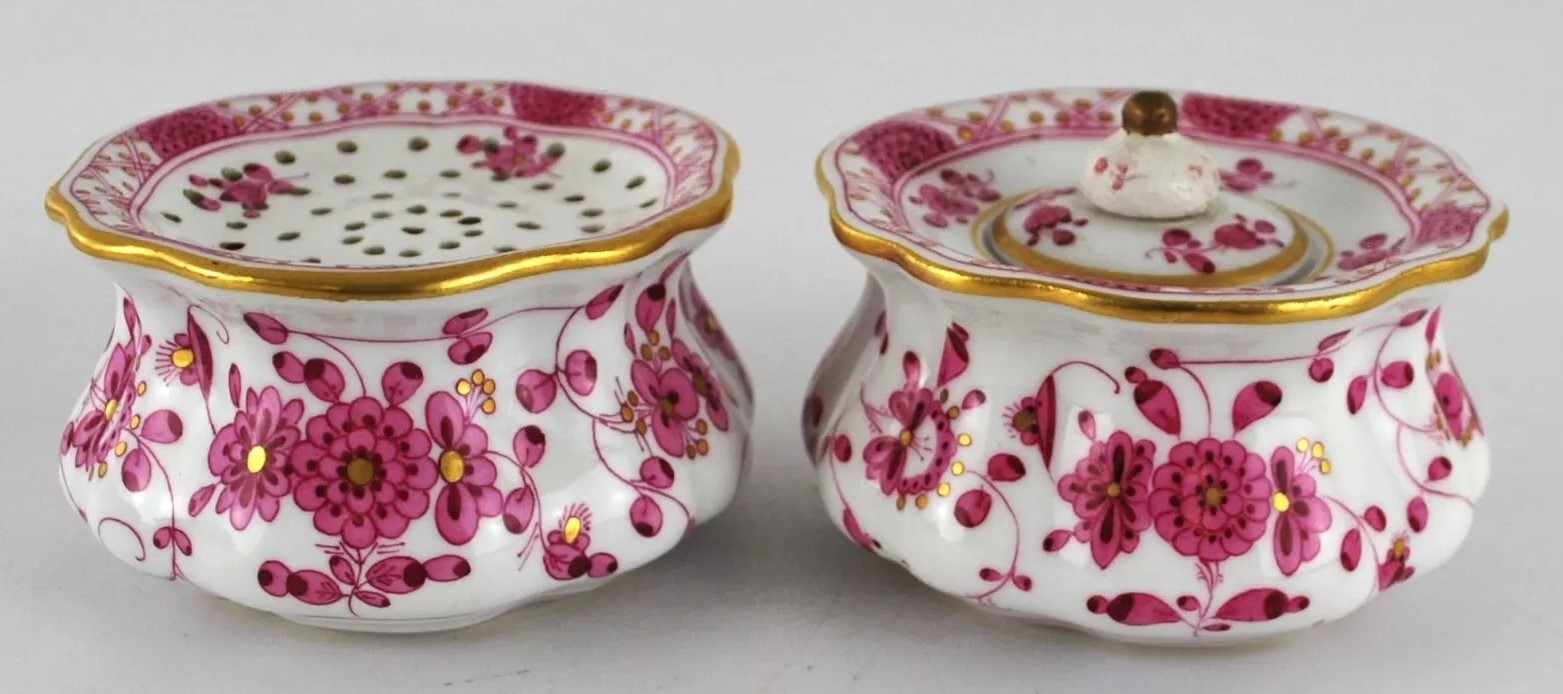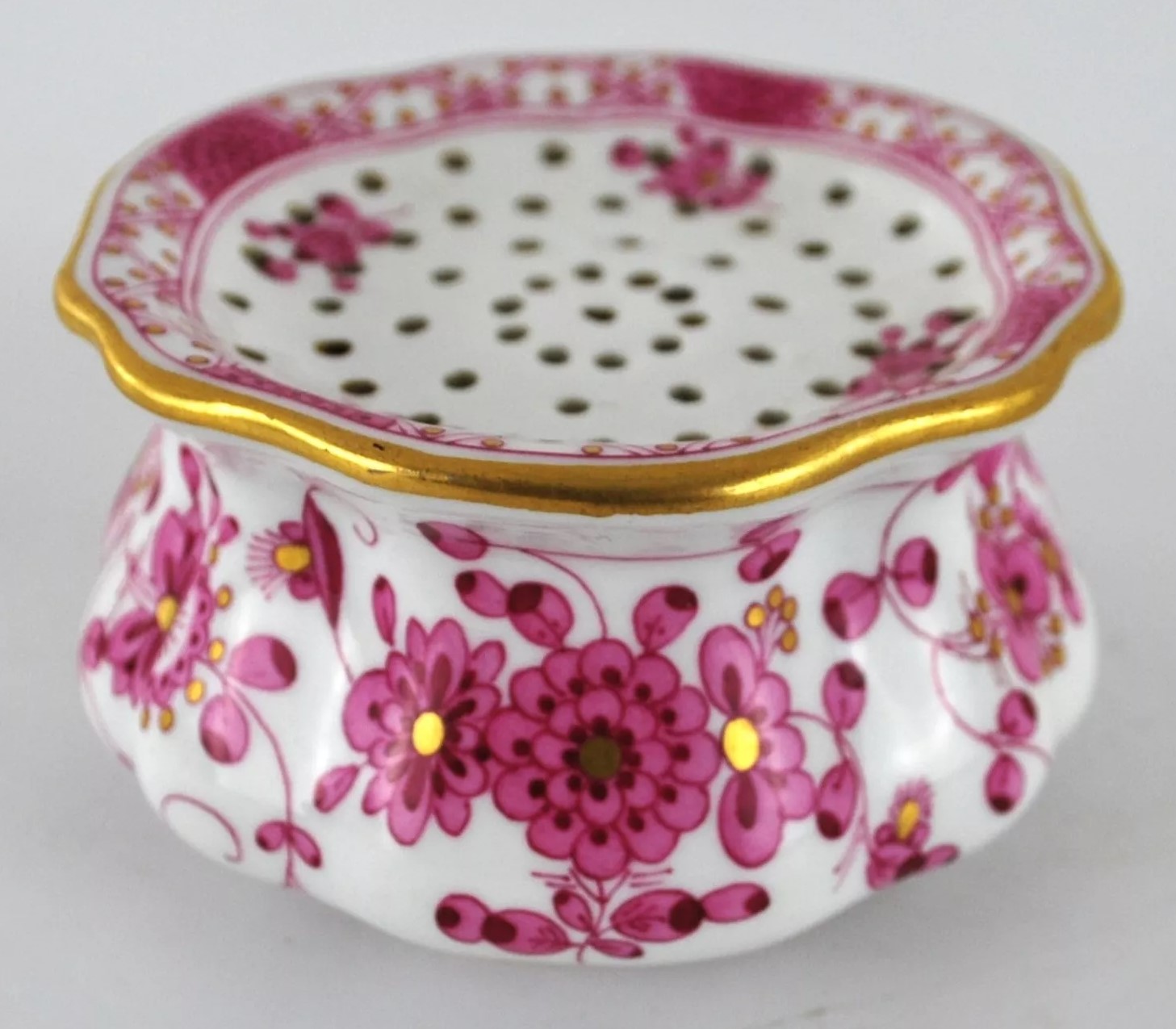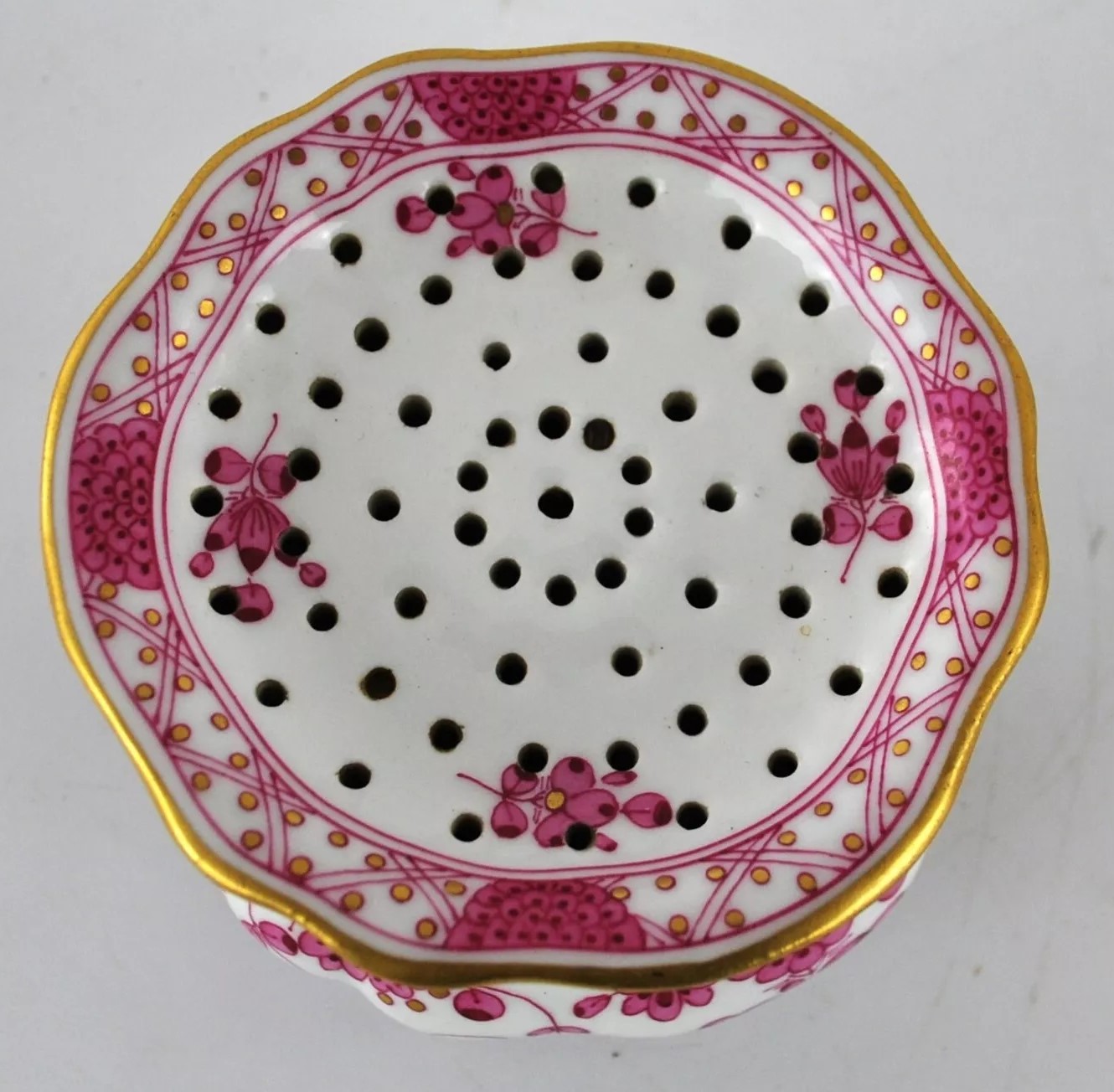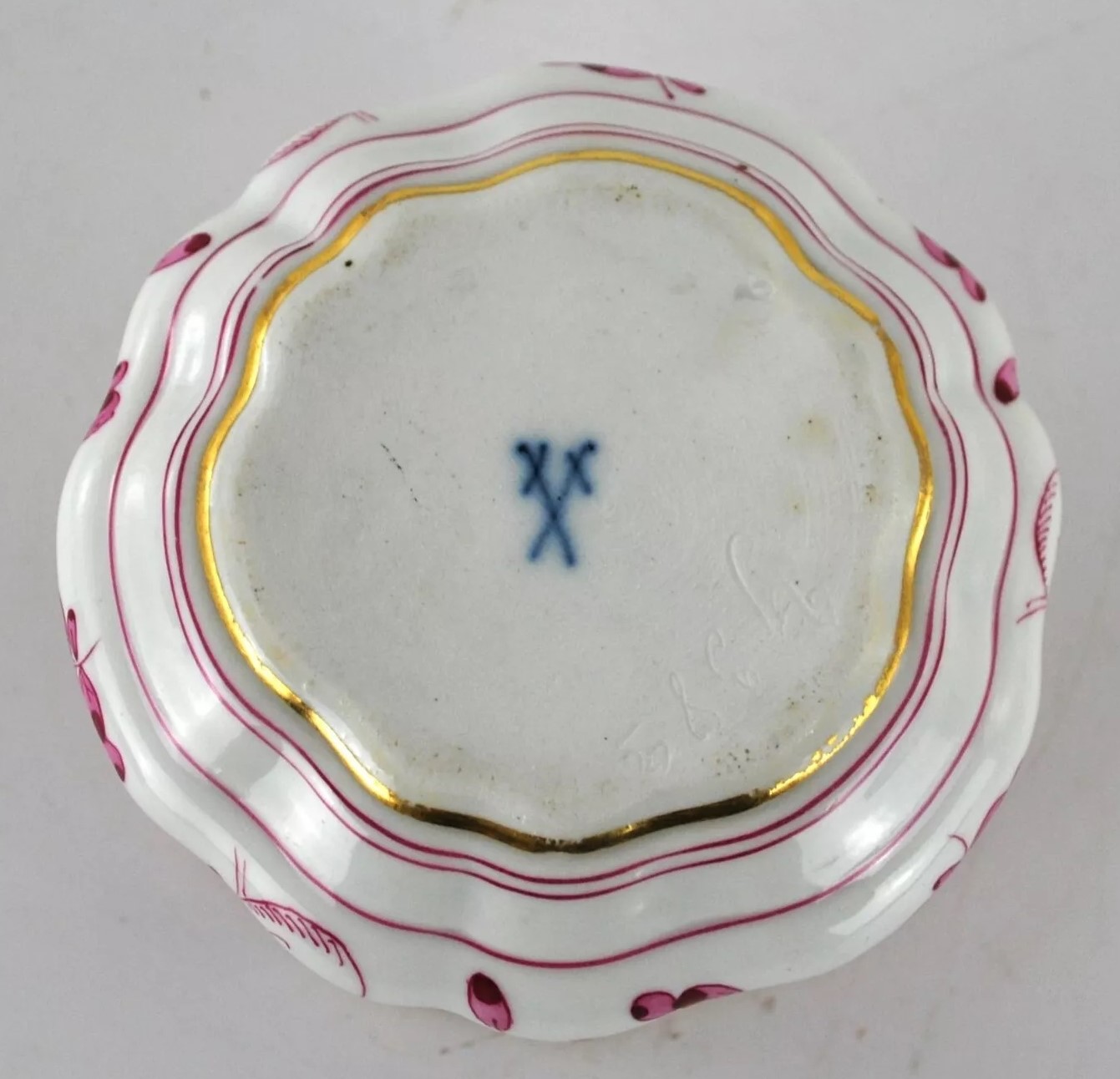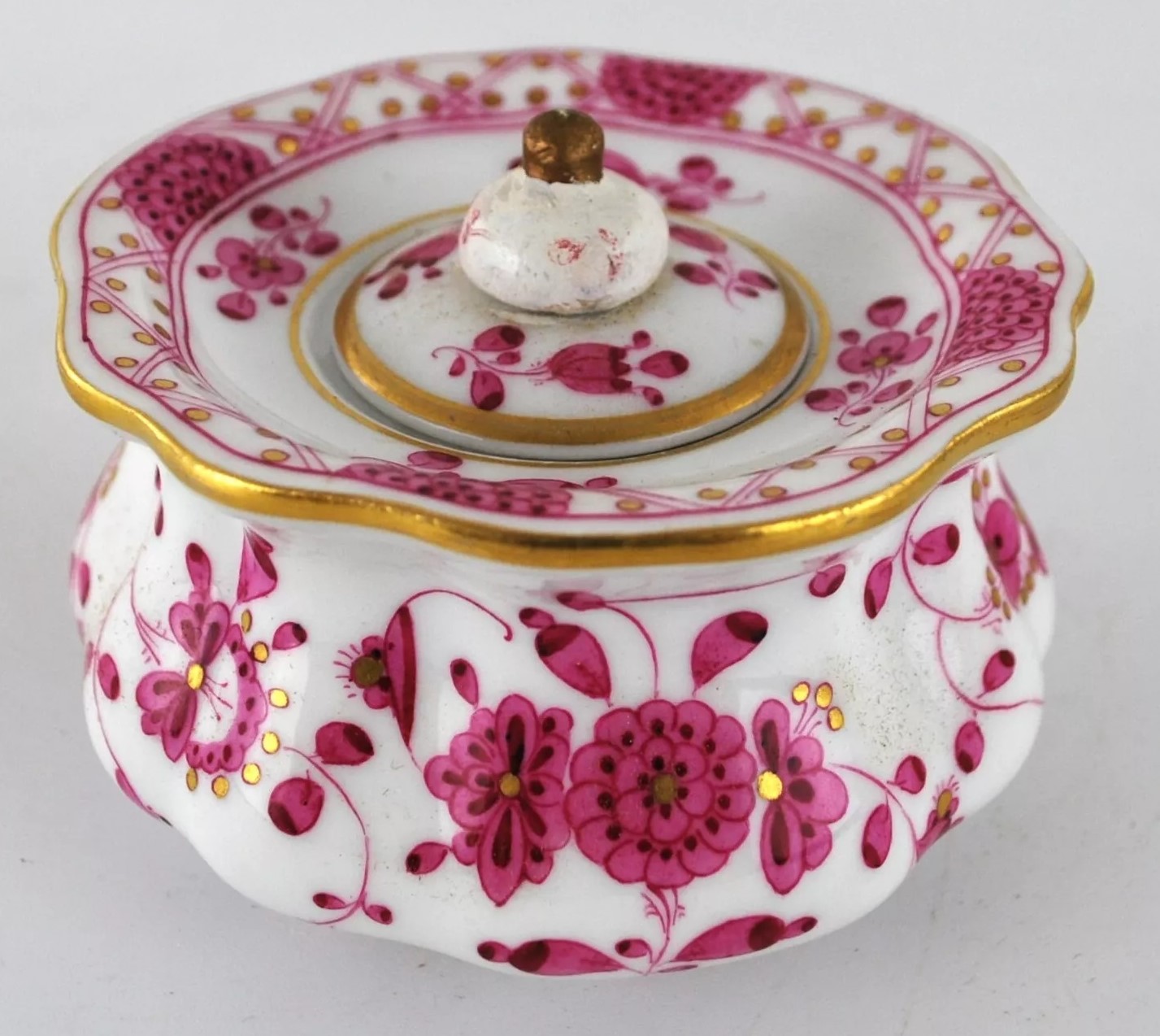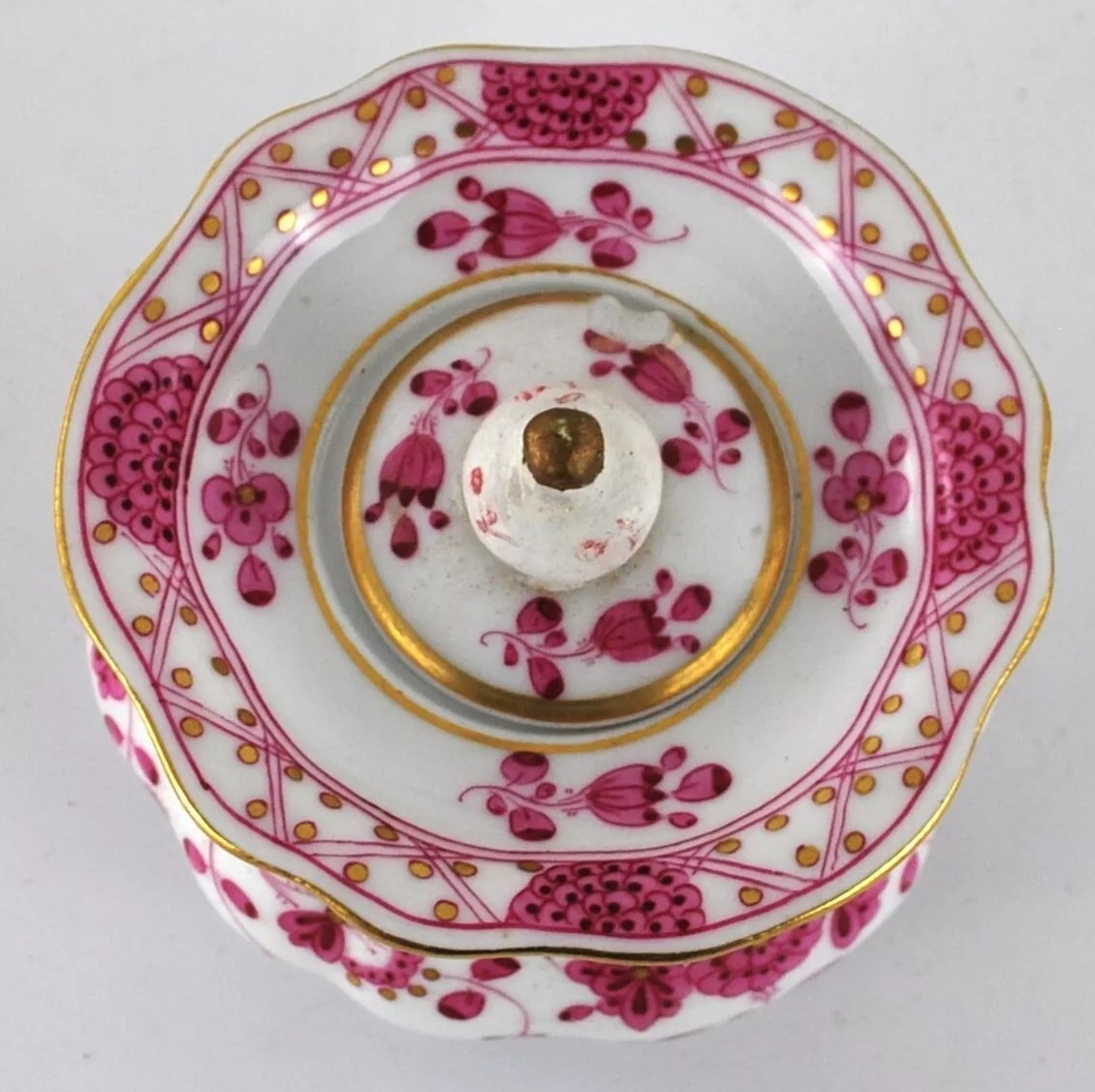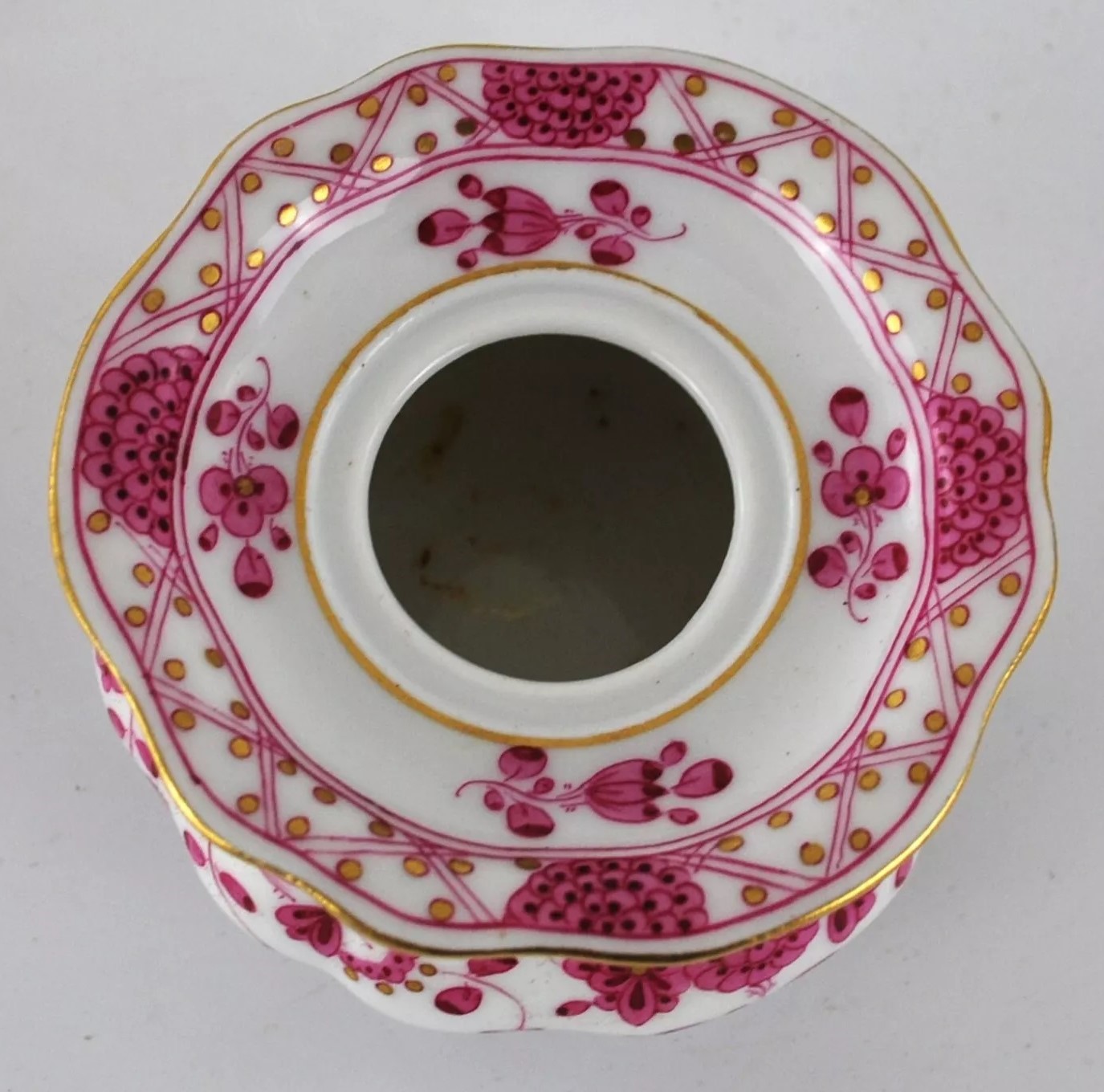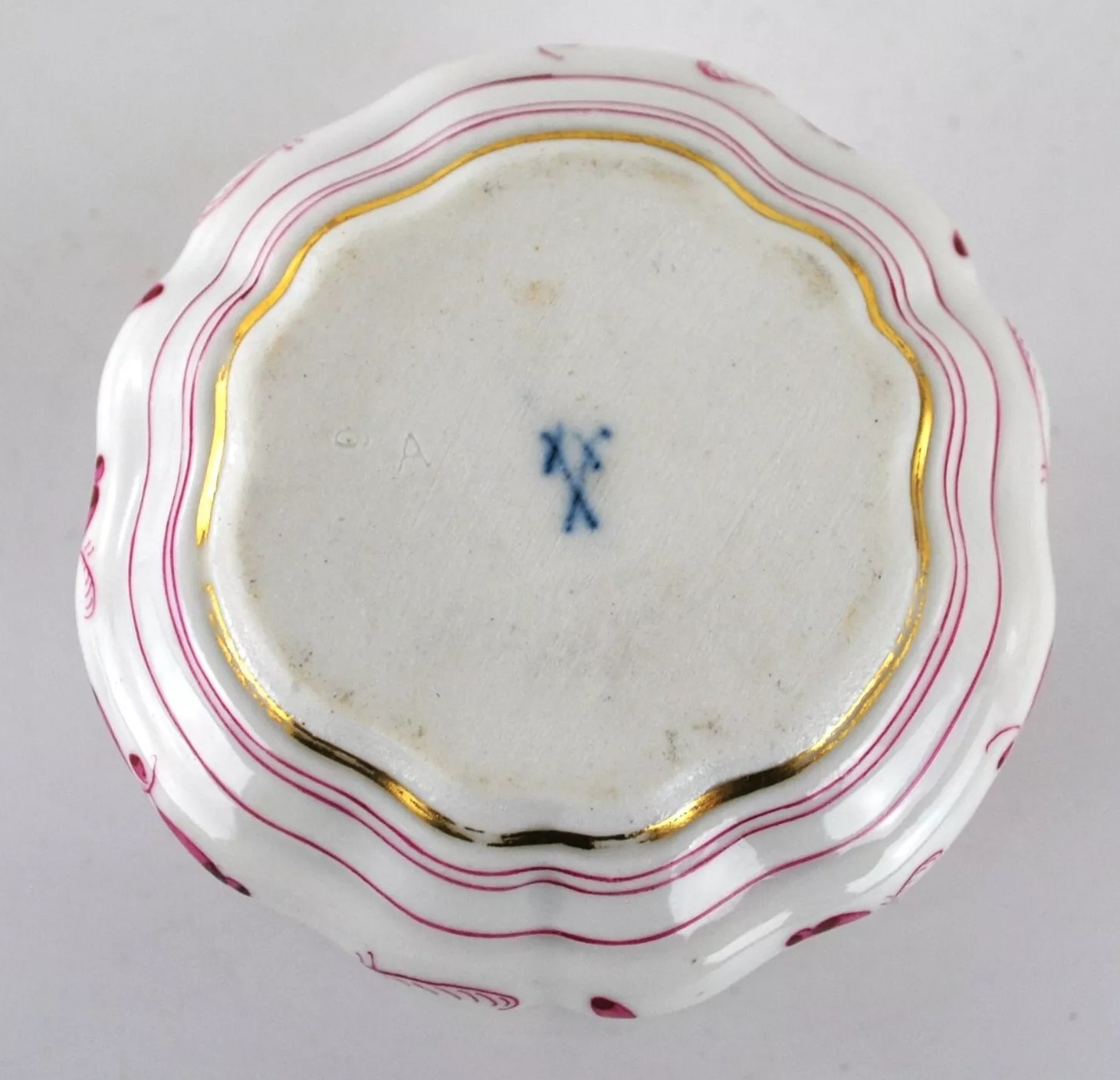
Meissen Porcelain Inkstand
| Categories | Ceramics/Porcelain "Named" Makers |
| Material | Porcelain |
| Markings | See narrative |
| Manufacturer | Meissen |
| Origin | Germany |
| Date or Era | circa 1880 |
| Measuring | Tray – 10 ¾” x 7”; Inkwell – 3 ½” diameter; 2 ½” high with lid; Sander – 3 ½” diameter; 2” high |
This Meissen inkstand includes an inkwell and a sander, both placed on a tray. The tray itself features scalloped edges with gilded detailing. The inkwell and sander are adorned with pink floral patterns and gold accents, one of Meissen’s iconic decorative motifs called “Indianische Blumen” (Indian Flowers). The blue underglaze crossed swords mark with pommels on the underside signifies its origin from the Royal Manufactory Meissen, one of the most renowned porcelain manufacturers in Europe.
The “Indianische Blumen” (Indian Flowers) pattern is one of the oldest and most iconic decorative motifs used by Meissen. This pattern dates to around 1720 and is characterized by its intricate floral designs, which were inspired by East Asian porcelain. Despite the name, the pattern has little to do with India; instead, it reflects the European fascination with exotic and oriental designs during that period.
The “Indianische Blumen” pattern often features stylized flowers and foliage, typically painted in vibrant colors and sometimes enriched with gilding. This design was applied to a variety of Meissen porcelain items, including tableware, vases, and decorative pieces.
Meissen’s use of this pattern highlights the influence of East Asian art on European porcelain production. The pattern was part of a broader trend where European manufacturers sought to emulate and adapt the highly prized Chinese and Japanese porcelain that was being imported by the East India Companies.
Sold for $260 in August 2024
Content disclaimer. The information posted is the owner’s best knowledge and may not have been vetted by the SOIC. We welcome comments, corrections, and additions, working to make our website information comprehensive and accurate.
Join the Society of Inkwell Collectors (SOIC) – it’s free!
Founded in 1981 as a non-profit organization,
we are documenting inkwells (and accessories).
We’re here to help and inform!
